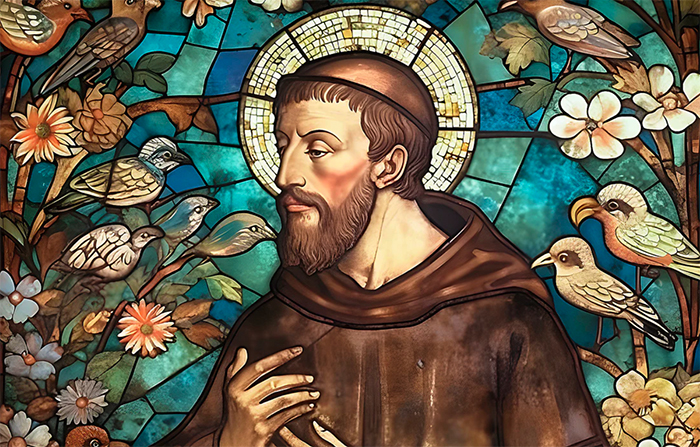
Today, we celebrate the Memorial of Saint Francis of Assisi. Fr. Daniel Horan, OFM, writes that Saint Augustine of Hippo famously remarked that God is the One who is closer to us than we are to ourselves. This experience of divine immanence, of the presence of God among and within creation, was the keystone of Saint Francis’ whole approach to prayer. His commitment to Christian living in the beginning was a ‘literal’ approach to discipleship. His focus was on the externals of affective religiosity, such as attending Mass and physically rebuilding churches. The increasing number of relational encounters—the living among lepers, the unsolicited brothers and sisters, the reception of Clare, and other experiences shifted over time, his vision of prayer. If prayer is always a form of communication with God, then we are, in some sense, always praying because God is always already present to us. It is, in a sense, a form of hubris to think that we can turn on or turn off the prayer channel as if we had the ability to select when God is able to receive our missives. In truth, not only what we say or think, but how we act, what we prioritize, how we love, how we care for one another, and so on, all combine to communicate something to the God who is at all times nearer to us than we are to ourselves. Long before St. Ignatius popularized the expression, finding God in all things, Saint Francis’s understanding and experience of prayer was a form of ordinary mysticism. For Francis, prayer was always a journey of growing more deeply in relationship with God and neighbor, including his nonhuman neighbors. His own narrative of lifelong conversion and his model for how to prioritize the elements of one’s life—never extinguish the spirit of prayer and devotion, embrace regular solitude, and so on—provide us with a pattern of life, a guide for our own journeys, and a series of points for reflection. The objective of prayer, to put it simply, is nothing more than for each of us, in our own way and in our own contexts, to become more and more a living prayer.
